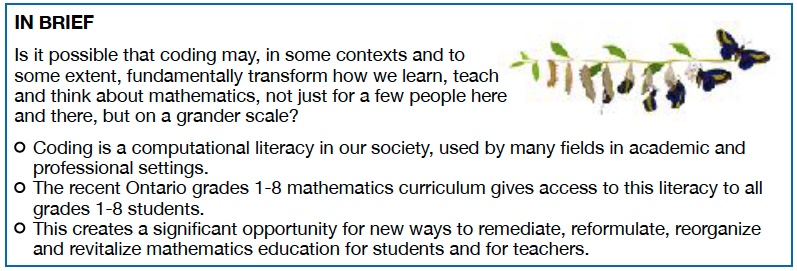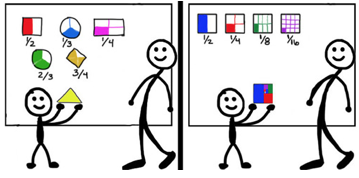Coding in the Ontario Mathematics Curriculum, 1-8: Might it be transformational?
Read the March 2021 report here!
Might coding, in some ways and to some extent, fundamentally transform how we learn, teach and think about mathematics in grades 1-8 education?
To answer this question we turn to diSessa (2000, 2018), to view coding through a literacy lens, and map the Ontario situation to diSessa’s literacy principles.
The “evidence” we use comes from 3 sources: Ontario curriculum documents, teaching resources developed by team members, and data from mathematics + coding classroom research conducted by team members in Ontario and in Brazil.


 Continuing from our usual
Continuing from our usual